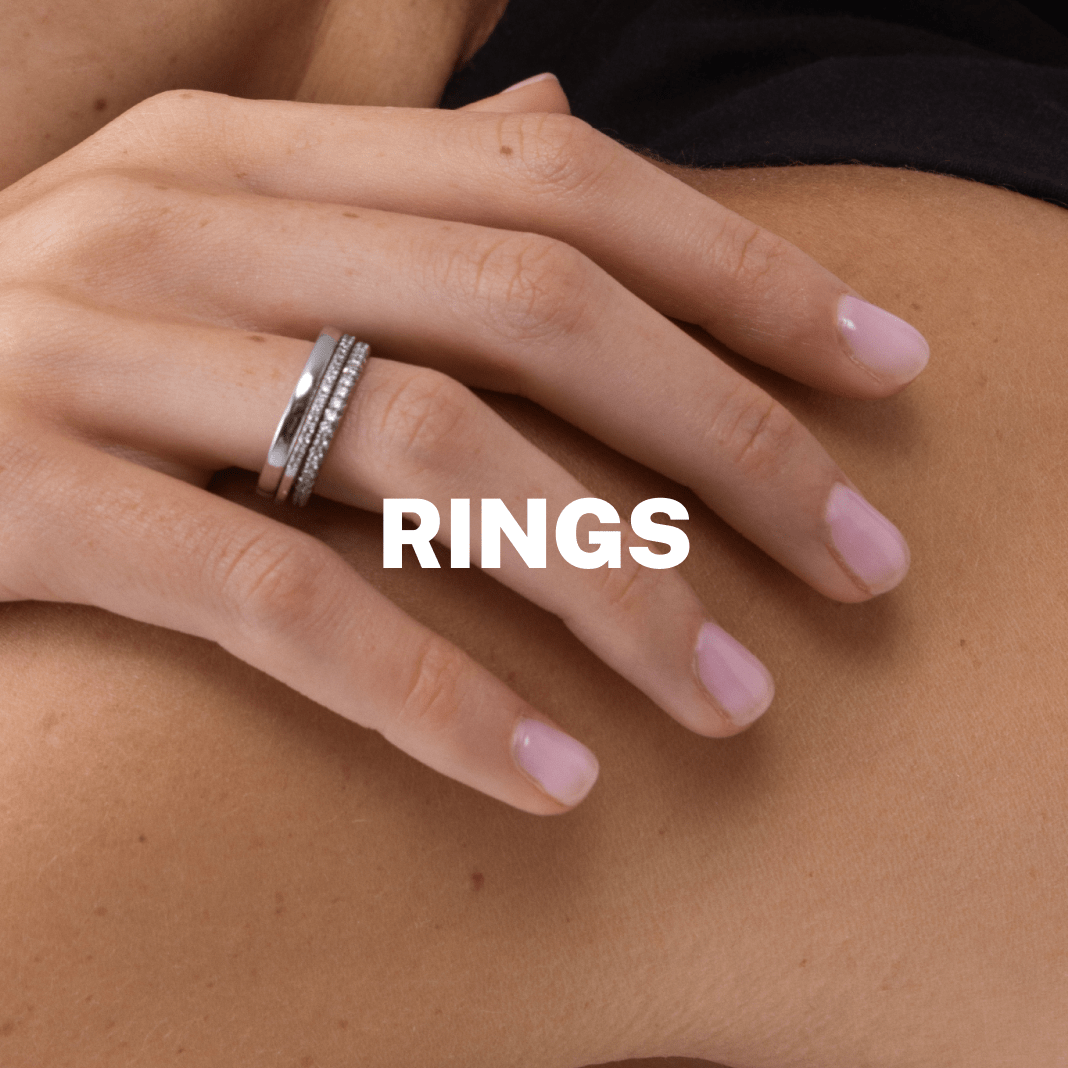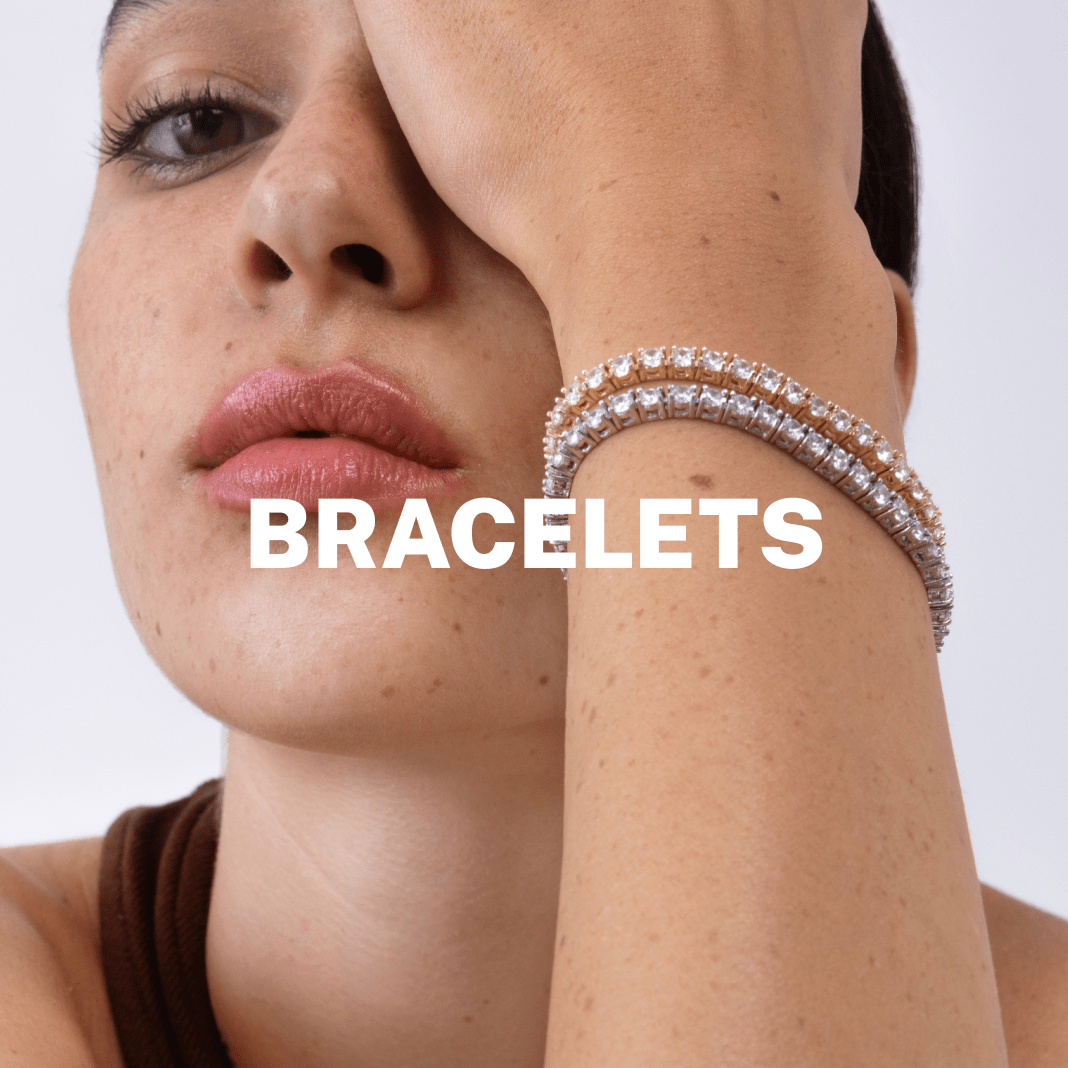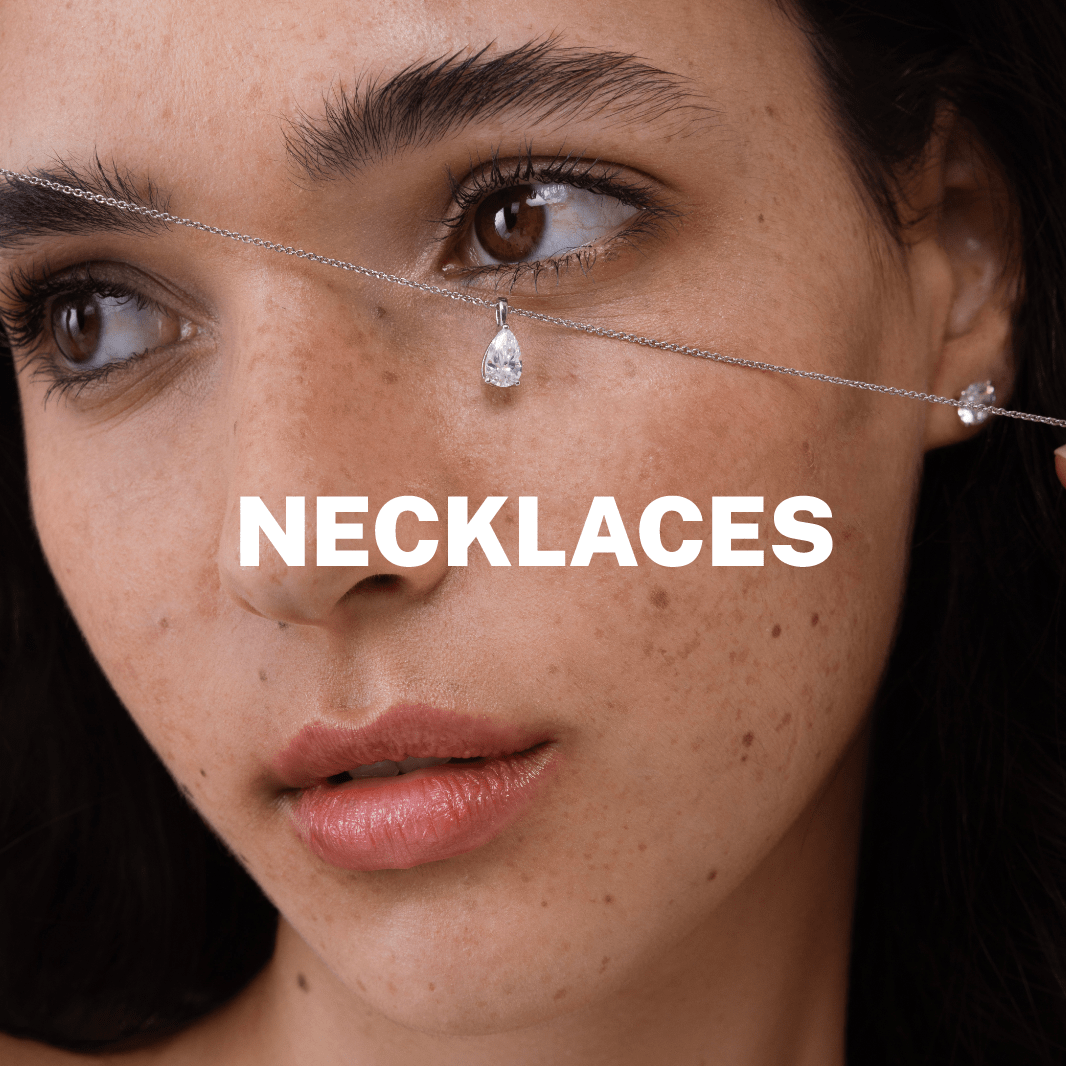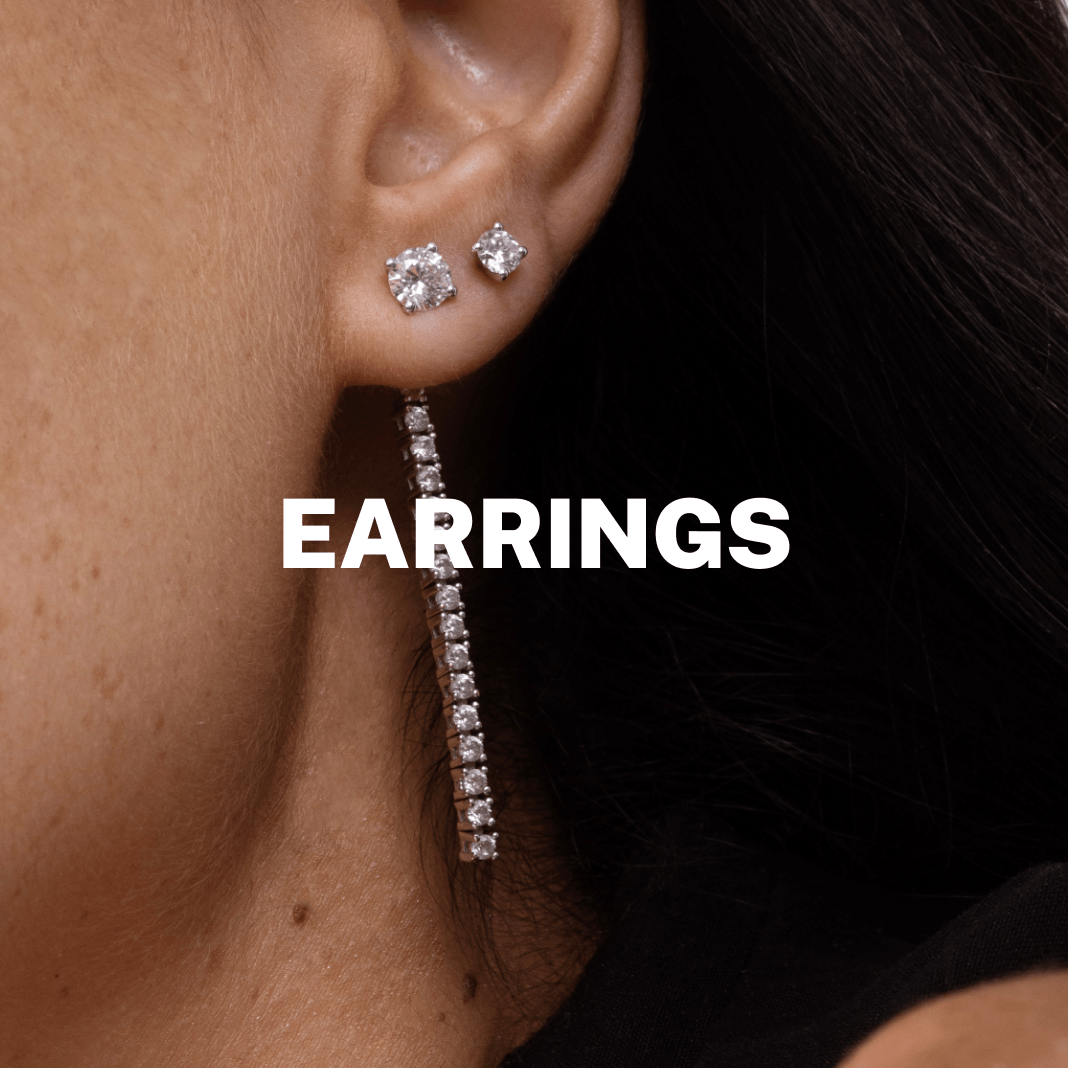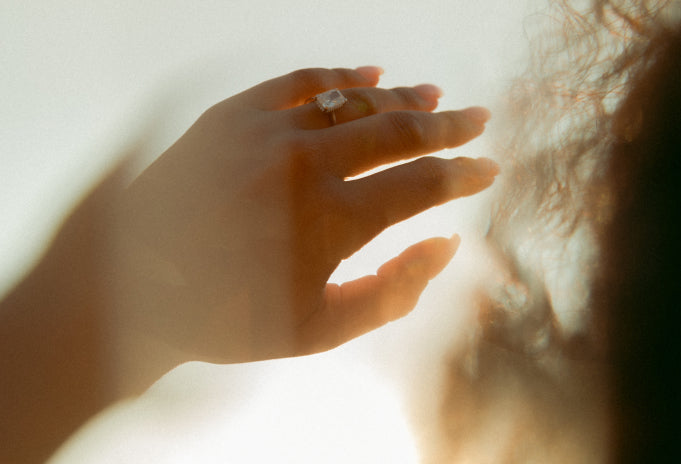
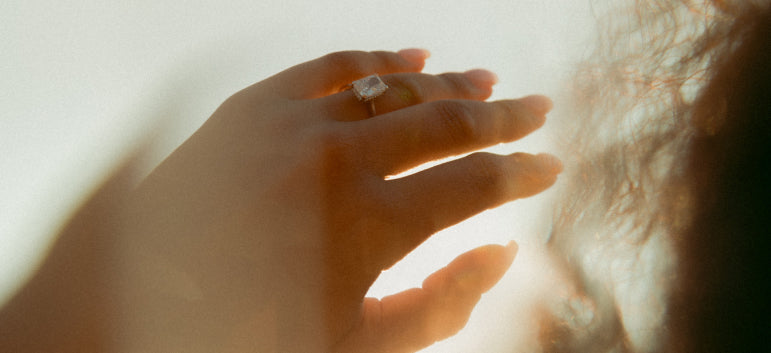
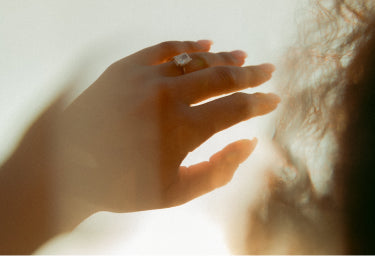
חיתוך יהלום
לחיתוך יהלום מספר רמות- סביר, טוב, טוב מאוד ומצוין.

חיתוך יהלום = רמת הברק של היהלום
אסור להקל ראש בחשיבות של דירוג החיתוך של היהלום שלכם. איכות החיתוך, הפרופורציות שלו, רמת הגימור והסימטריה שלו ישפיעו כולן על הדרך בה היהלום משקף את קרני האור הפוגעות בו. המשמעות היא ניצוץ מרשים, בהירות וברק, שהם בדיוק הדברים שאתם מחפשים ביהלום מלכתחילה.
לצד החיתוך, שהוא החשוב ביותר בין ארבעת ה-C's בדירוג היהלום, תרצו לבחור גם במשקל קראט, צבע ורמת ניקיון התואמים לתקציב שלכם. בדקו את טבלאות הצבע והניקיון שלנו כדי לבחון מה הדרגה שהכי מתאימה לכם.
חיתוך יהלומים בימינו מבוצע על פי פרמטרים מחושבים בקפידה הנחשבים אידיאלים להשתקפות האור. בטבלת חיתוך היהלומים המצורפת מטה תוכלו לראות את ההבדל בין איכויות החיתוך השונות וכן את הבסיס לכל אחד מהפרמטרים ומה המשמעות שלהם.
רמות חיתוך יהלומים
סביר / Fair
חיתוך באיכות נמוכה, לעתים קרובות בעל חוסר סימטריה עם היבטים כהים הנובעים מחוסר דיוק בחיתוך. ליהלומים עמוקים מאוד או רדודים מאוד בחיתוך בדירוג כזה יהיה פחות ברק, כך שבחירה ביהלום כזה תהיה התפשרות משמעותית על רמת הברק של היהלום. לרוב, חיתוך סביר ומטה יתאים ליהלומים בעלי חיתוך עמוק (יחסית), מה שיכול לגרום ליהלום להיראות קטן ביחס למשקל הקראט שלו.
טוב / Good
יהלומים באיכות חיתוך טובה עם נצנוץ וברק גבוהים, המשקפים את האור שפוגע ביהלום בצורה טובה.
טוב מאוד / Very good
יהלומים בחיתוך פרימיום בעלי מראה הדומה מאוד ליהלומים בחיתוך מעולה לעין העירומה וללא כלי מדידה מקצועיים.
מעולה / Excellent
הדירוג הטוב ביותר בטווח, עם פרופורציות, גימור וסימטריה מצוינות המאפשרות השתקפות אור גבוהה ואחידה מכל זוויות היהלום. השילוב המושלם בין גודל וניצוץ, שישקף בצורה מעולה כמעט כל קרן אור שתפגע בו. מקרה ייחודי של יהלומים בחיתוך Excellent מושלם נקרא Ideal Cut.
כל היהלומים שלנו נבחרים בקפידה בצורה ידנית ונעים בין רמת חיתוך טובה מאוד לבין חיתוך מעולה ואידיאלי. כל יהלום מבית שירי אודיז הוא נקי לעין, חסר צבע ובעל ברק משמעותי.
מאפיינים של חיתוך יהלום
ליטוש
הליטוש מתייחס לחיתוך היהלום מעשה ידי אדם, ודירוגו בוחן כמה חלקות פאות היהלום. הליטוש הוא מאפיין חשוב בדירוג, שכן ליטוש באיכות לא טובה יגרום ליהלום לשקף אור בצורה לא אחידה, ויוריד את רמת הברק והנצנוץ.
סימטריה
סימטריה של יהלום מתייחסת להתאמה והיחס בין הפאות והזוויות שלו, המזכירות יחסים בין מראות. ככל שדירוג הסימטריה גבוה יותר, כך היהלום נראה יותר אסתטי ומושך לעין, ובהתאם רמת הברק והנצנוץ שלו עולה.
חיתוך עמוק מול חיתוך רדוד
ליהלומים בחיתוך עמוק יש שטח פנים קטן יותר, וזאת לצד העובדה שהם "מאבדים" אור בבסיס היהלום. מנגד, ביהלומים בחיתוך רדוד במיוחד האור עלול לברוח דרך בסיס היהלום, למרות שהם נחשבים לנחשקים יותר ובעלי נראות גדולה יותר.
יהלומים בחיתוך עמוק לא רק מאבדים אור מבסיס האבן, אלא גם בעלי שטח פנים קטן יותר. בעוד שיהלומים בחיתוך רדוד בעלי ביקוש גבוה יותר מכיוון שהם נראים גדולים ביחס למשקל הקראט שלהם, ביהלומים בחיתוך רדוד במיוחד האור עלול לדלוף החוצה מבסיס האבן. חיתוך היהלום האידאלי יהיה בטווח שביניהם.
מסיבה זו, חיתוך הוא המאפיין החשוב ביותר מבין ארבעת ה-C's בדירוג היהלום. לשם ההשוואה, עדיף לבחור ביהלום ברמת חיתוך טובה, במשקל 0.9 קראט ובקוטר 6 מ"מ, מאשר ביהלום בחיתוך עמוק, השוקל 1 קראט בקוטר 6 מ"מ, שכן ליהלום בחיתוך העמוק יהיה פחות ברק הנראה לעין ומחירו יהיה גבוה יותר.

לבבות וחצים
יהלומים עגולים עם חיתוך לבבות וחצים הם בעלי החיתוך האידיאלי, עם פאות סימטריות להפליא ורמת ליטוש מצוינת. ליהלום עם חיתוך לבבות וחצים יהיו הכי הרבה ברק ונצנוץ. המונח "לבבות וחצים" מתייחס לצורות המופיעות ביהלום תחת תאורה מסוימת. כאשר בוחנים את היהלום מצדו העליון- יופיעו בו שמונה חצים, וכאשר בוחנים אותו מלמטה- שמונה לבבות.

חיתוך וצורות יהלומים
דירוג רמת החיתוך רלוונטי בדרך כלל ליהלומים עגולים בחיתוך בריליאנט, שכן יש להם פאות וזוויות מוגדרות לחיתוך האידיאלי עבורם.

יהלומים עגולים
מימדי החיתוך האידאליים בעבור יהלומים עגולים נקבעו לראשונה ע"י מרסל טולקובסקי- וכללו נוסחה תיאורטית אידיאלית בכדי למקסם את פליטת האור משטח הפנים של היהלום. ליהלומים בחיתוך אידיאלי יהיו חיתוך, ליטוש וסימטריה ברמה מעולה, ויתאימו לפרופורציות הבאות:
|
Depth % |
Table % |
Girdle |
Culet |
Crown Height % |
Pavilion Depth % |
|
57-63 |
53-57 |
Thin-Medium |
None |
13.1-16.2 |
41.7-44.8 |

יהלומים בחיתוך פרינסס מרובע
אם אתם חושקים ביהלום פרינסס מרובע, תרצו להקפיד על יחס אורך-רוחב של 1.00-1.05. בכדי להבטיח רמת ברק טובה ונראות המייצגת את משקל האבן בקראט, השתדלו לבחור ביהלום בטווח הבא בדירוג החיתוך שלו:
|
Depth % |
Table % |
Girdle |
Culet |
l/w Ratio |
|
64-73 |
62-69 |
Thin-Slightly thick |
None-Very Small |
Square 1.00-1.05 |

יהלומים בחיתוך רדיאנט, אמרלד ואשר
הצורות המאורכות יראו הכי אלגנטיות תחת יחס אורך רוחב של 1.35-1.5, ויהיו בעלות יותר נוכחות מאשר ביחס של 1.20-1.30. אמנם, בשורה התחתונה מדובר בעניין של טעם אישי ולא של איכות. יחס של יהלום רדיאנט בחיתוך מרובע (או בחיתוך אשר) צריך להיות בטווח של 1.00-1.05, בדומה ליהלום פרינסס.
בבחירת יהלומים בחיתוך אמרלד, תרצו להימנע מיהלומים בעלי חלקים כהים. בעבור שתי הצורות הנ"ל, השתדלו להימנע מחיתוך עמוק וקטן למראה- למרות שבבחירת יהלום רדיאנט, יכול להיות שהדבר לא יגרום לפגיעה משמעותית ברמת הברק.
|
Depth % |
Table % |
Girdle |
Culet |
l/w Ratio |
|
60-67 |
62-70 |
Thin-Slightly thick |
None-Very Small |
Square 1.00-1.05 |

יהלומים בחיתוך אובאלי
יהלומים אובאליים, בהגדרתם, צריכים להיות מאורכים כאשר המראה האסתטי ביותר יתקבל ביחס של 1.35-1.50. הצורה האובאלית של היהלום תכלול לעתים אפקט של "עניבת פרפר", כאשר שתי פאות מנוגדות במרכז האבן עלולות להיראות כהות יותר. בבחירת יהלום אובאלי, השתדלו לבחור ביהלום עם הערכים הנמוכים ביותר למאפיינים הבאים:
|
Depth % |
Table % |
Girdle |
Culet |
l/w Ratio |
|
57-62 |
53-64 |
Thin-Slightly thick |
None-Very Small |
Elongated oval 1.35-1.50 |

יהלומים בחיתוך מרקיזה
בדומה ליהלומים אובאליים, ליהלומי מרקיזה חיתוך רדוד יחסית הממקסם את שטח הפנים שלהם ועשוי ליצור אפקט של "עניבת פרפר".
|
Depth % |
Table % |
Girdle |
Culet |
l/w Ratio |
|
57-62 |
53-64 |
Thin-Slightly thick |
None-Very Small |
Elongated oval 1.80-2.00 |
שאלות נפוצות בנושא חיתוך יהלומים
אילו צורות חיתוך יהלומים אתם מציעים בתכשיטים שלכם?
רוב הקולקציה שלנו כוללת יהלומים עגולים, שכן לרוב מדובר בצורה מסורתית ועל זמנית. עם זאת, אנחנו מציעים גם יהלומים אובאליים ויהלומי אמרלד, ומספר צורות נוספות. רמות החיתוך שאנו מציעים נעות בין טוב מאוד לחיתוך אידיאלי בכדי להבטיח ברק בעל נוכחות.
האם הצורה משפיעה על גודל / מידת היהלום?
בעבור משקל קראט מוגדר תוכלו לקבל יהלום בעל שטח פנים גדול או קטן יותר- בהתאם לצורה והחיתוך שבחרתם. טבלת הקראט שלנו תוכל להראות לכם את גודל הצורות הפופולריות ביותר ביחס למשקלן בקראט, אך שימו לב שגם עומק החיתוך ויחס אורך-רוחב משפיעים גם הם על גודלו הסופי.
האם החיתוך משנה את ערך היהלום?
רמות חיתוך שונות מתייחסות לכמות וצורה שונה של יהלום גולמי, ולכן העלות הגולמית שלהן עלולה להשתנות בהתאם. בנוסף לעובדה שהביקוש אליו גבוה במיוחד, יהלום בחיתוך אידיאלי עושה שימוש ביותר חומר גולמי ועל כן מחירו יהיה גבוה יותר.
האם יהלום בחיתוך אידיאלי נחשב טוב?
יהלום בחיתוך אידיאלי מתייחס בדרך כלל ליהלום עגול ברמת חיתוך, ליטוש וסימטריה מעולים. חלק מהמעבדות הגמולוגיות ייצרו תת-סעיף בעבור החיתוך האידאלי ובו פרמטרים מחמירים במיוחד. יהלומים בחיתוך אידאלי נחשבים לטובים ביותר בקטגוריה והינם בחירת פרימיום ליהלומים עגולים. כאשר מדובר ביהלומים בצורות חיתוך יוקרתיות אחרות, מומלץ לכוון לפרופורציות שתואמות את הטעם האישי שלכם לצד הפרופורציות המצוינות מעלה, וזאת לצד רמת חיתוך, פוליש וסימטריה טובה מאוד לכל הפחות.
כמה דירוג רמת החיתוך משפיע על המחיר?
לחיתוך מעולה או אידיאלי יכולה להתלוות תוספת של כ-10-20% במחיר, ולחיתוך טוב או סביר- הפחתה של אותם אחוזים. כאשר מחשבים את תקציב שלכם בהשוואה לגודל היהלום והאיכות שלו, מומלץ בחום לבחור באיכות חיתוך טובה מאוד לכל הפחות.
מהם סוגי החיתוך של יהלומים?
שני הסגנונות העיקריים לחיתוך יהלומים הם חיתוך בריליאנט או חיתוך מדרגה. חיתוך בריליאנט בא לידי ביטוי בדרך כלל ביהלומים עגולים, יהלומי פרינסס או קושאן, יהלומי רדיאנט, אובאליים, אגס, לב, טריליון ומרקיזה. חיתוך מדרגה נעשה לרוב ביהלומי אמרלד, אשר ובגט. ניתן למצוא יהלומים עתיקים המציגים צורות חיתוך ישנות יותר בעלי פחות פאות או דפוס חיתוך ייחודי אחר.
האם חיתוך היהלום זהה לצורת היהלום?
חשוב לא להתבלבל בין רמת החיתוך, הצורה והחיתוך של היהלום, שהוא מעשה הדוגמה הגיאומטרית שמופיעה על היהלום ממבט על. מומלץ להציץ בטבלת הצורות שלנו כדי לבחור את הצורה שהכי מוצאת חן בעיניכם. בנוסף, טבלת רמת החיתוך היא בעיקר מדד לאיכות החיתוך של היהלום, אולם ניתן לקבוע אותה גם על ידי מפרטים שונים- בעיקר בעבור צורות יוקרתיות ומיוחדות שהן לרוב עניין של העדפה וניתן להתפשר מעט ברמת החיתוך שלהן.
מתי אני יכול להתפשר על רמת החיתוך של היהלום?
בעת השיבוץ של היהלום בתכשיט, ניתן לכופף מעט את החוקים ולהשיג תוצאה חלקה שכמעט לא מציגה פגמים בחיתוך. מומלץ לקחת לתשומת את הלב את הטיפים הבאים בעת התייעצות עם מומחה בנוגע לעיצוב התכשיט או היהלום עצמו במטרה להשיג את המראה הטוב ביותר במחיר הטוב ביותר.
ככל שהיהלום גדול יותר, כך הכרחי יותר שרמת החיתוך שלו תהיה גבוהה. מנגד, אם מדובר ביהלום קטן, ההפרש בעלויות בין הרמות השונות יהיה פחות משמעותי.
- צורות יוקרתיות הן משחק של איזון בין העדפה אישית ובין רמת חיתוך, בעיקר כאשר הן משובצות בתכשיט.
- כאשר מדובר ביהלומי סוליטייר, עגולים בעיקר, כדאי לשמור על רמת חיתוך גבוהה ככל הניתן שכן כל הפוקוס מתרכז באבן אחת. כשמדובר ביהלומים קטנים המשובצים בתכשיט, בעיקר בשיבוץ הילה- אפשר להתפשר גם על חיתוך פחות ממושלם.
- כאשר בוחרים ביהלום עם דירוג צבע נמוך, הבחירה בדירוג חיתוך גבוה תיצור תוצאה לבנה יותר ותעזור ליהלום לשקף יותר אור.
- בחיתוך בריליאנט ביהלומים מומלץ לשמור על דירוג חיתוך גבוה, שיעזור לחפות או לטשטש פגמים הנראים לעין באבן (למשל בדירוג ניקיון SI1-I1).
- ישנם צורפים ומומחים שיוכלו לבחור ביהלום מחוץ לטווח המקובל, ועדיין לשמור על מראה אסתטי ויוקרתי שיחמיא לסגנון של התכשיט- כל זאת בהתאם לעיצוב של התכשיט והפרטים הטכניים של שיבוץ היהלום בו.
